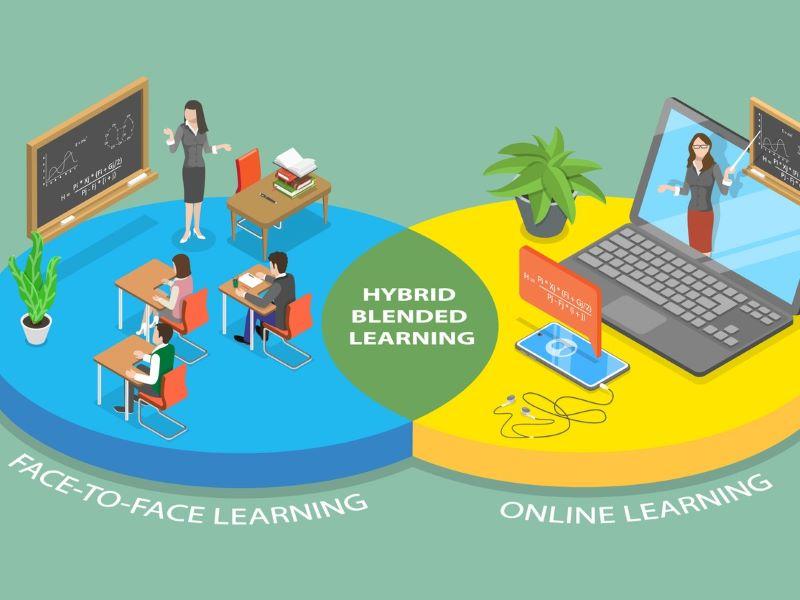
Hyflex learning: what, why and how
Hyflex programmes can extend higher education to a much wider pool of students, through flexible, accessible learning. Johnny Lee explains how institutions can roll out hyflex learning so staff and students feel the benefits

You may also like
Popular resources
Why hyflex for us?
Digital teaching and learning enables a rethink and redesign of pedagogies based on the knowledge that a “one-size-fits-all” approach is unlikely to be inclusive. But what is the difference between hybrid and hyflex learning?
Hybrid is an approach to education that combines online teaching materials and interaction with traditional place-based classroom methods. Hyflex is a course design model that presents the components of hybrid learning in a flexible course structure that gives students the option of attending sessions in the classroom, participating online, or doing both.
As a way for higher education institutions to extend their reach to diverse learners all over the world, hyflex teaching overcomes the limits of physical classrooms, particularly for smaller institutions such as Ravensbourne University London, which offer courses like fashion, design and architecture that need plenty of space for hands-on work. It enables universities to prioritise on-campus teaching so fewer students from more theoretical and desk-based subjects need to come to campus for lectures.
- THE Campus collection: Higher education goes hybrid
- Classroom management strategies to enhance hyflex learning
- Ten useful tips for teaching a hybrid course for the first time
The hyflex model also facilitates partnerships with industry by allowing busy academic experts and leading industry figures worldwide to share their experience with our students online. This helps students build their networks with industry and equips them with the core knowledge employers and society seek.
MS Teams rooms: the core of our hyflex setting
To maintain quality and academic rigour in our hyflex classes, we invested in digital suites equipped with devices where students can access Microsoft (MS) Teams Rooms, pod microphones and cameras that track the students or lecturers speaking. All students can access shared content via their own devices. Where necessary, we provide devices to ensure all students can access the online elements of their courses.
MS Teams Rooms enable live transcription of classes or slide translation and enhance accessibility. Interactive whiteboards, synchronised with MS Whiteboard, are installed in some learning spaces to promote instantaneous multimodal communication during hyflex teaching.
Setting up effective hyflex learning spaces allows on-campus and remote students and educators to work collaboratively and instantaneously. But it must be done with careful consideration to ensure the hyflex programmes enhance access, equity of opportunity and collaboration.
The hyflex journey
Introducing the concept of hyflex
The move towards hyflex should be done in incremental steps.
1) Start with a pilot programme before rolling out hyflex more widely. When choosing which courses to test run, we prioritised those with less studio work such as computing or gaming. Postgraduate courses with more mature students and higher expectations of flexibility were also top of the list.
2) Trust your academics to know the learning needs of their students the best and enable them to deliver their lessons in the mode best suited to their students. Do not impose the hyflex teaching model on staff. Instead, educate academic staff on the benefits of hyflex teaching through both on-site and remote demonstrations, giving them direct experience and understanding of what hyflex can enable.
3) Encourage the use of hyflex meetings between staff to make it normal practice, with senior leaders setting the example. Hyflex communication can be used for all contexts including lectures, tutorials and peer discussions. This will help train students in different work modes that may be used in their future workplace.
Training teaching staff in hyflex
We offer academics technical and pedagogical support to build their capacity in teaching hyflex courses through:
1) Creating a range of supporting documents and guides such as user manuals, screencasts and demonstration videos, stored in a shared file online. Teaching staff can engage in self-paced learning or book on-demand training sessions.
2) Discussing with academics how to communicate clearly, use multimodal delivery and redesign lessons so that on-campus and remote students have equal access. For instance, we advise academics to repeat questions raised by on-campus students before answering and deliver their answers via text shared in MS Teams, rather than solely verbally. We recommend low-stake formative assessments using questioning or activities enabled by interactive digital learning tools such as Nearpod or Planet eStream.
3) Encouraging the use of digital learning tools, through instructional design support, to engage both groups of learners. For instance, using Padlet or Nearpod for co-creation, teaching students to use Adobe Creative Cloud Express or Canva to demonstrate learning outcomes in multiple forms such as social media feeds, blogs or videos and polling with tools like Mentimeter or Microsoft Forms.
4) Offering support during the initial roll-out of hyflex to relieve academics’ mental load during dual delivery. We asked for feedback from both remote and on-campus students to review our processes ahead of a full launch.
5) Inviting academics to share insight on the opportunities and challenges presented by hyflex at professional development events to build a community of practice.
What’s next for hyflex
Hyflex teaching has been well received in the pilots, offering increased flexibility to students and industry partners. It can tackle the learning space problem, especially for shared module delivery where student cohorts can be large, but also widen access to higher education to many potential students for whom it was previously out of reach.
Johnny Lee is a learning technologist at Ravensbourne University London.
If you found this interesting and want advice and insight from academics and university staff delivered direct to your inbox each week, sign up for the THE Campus newsletter.


